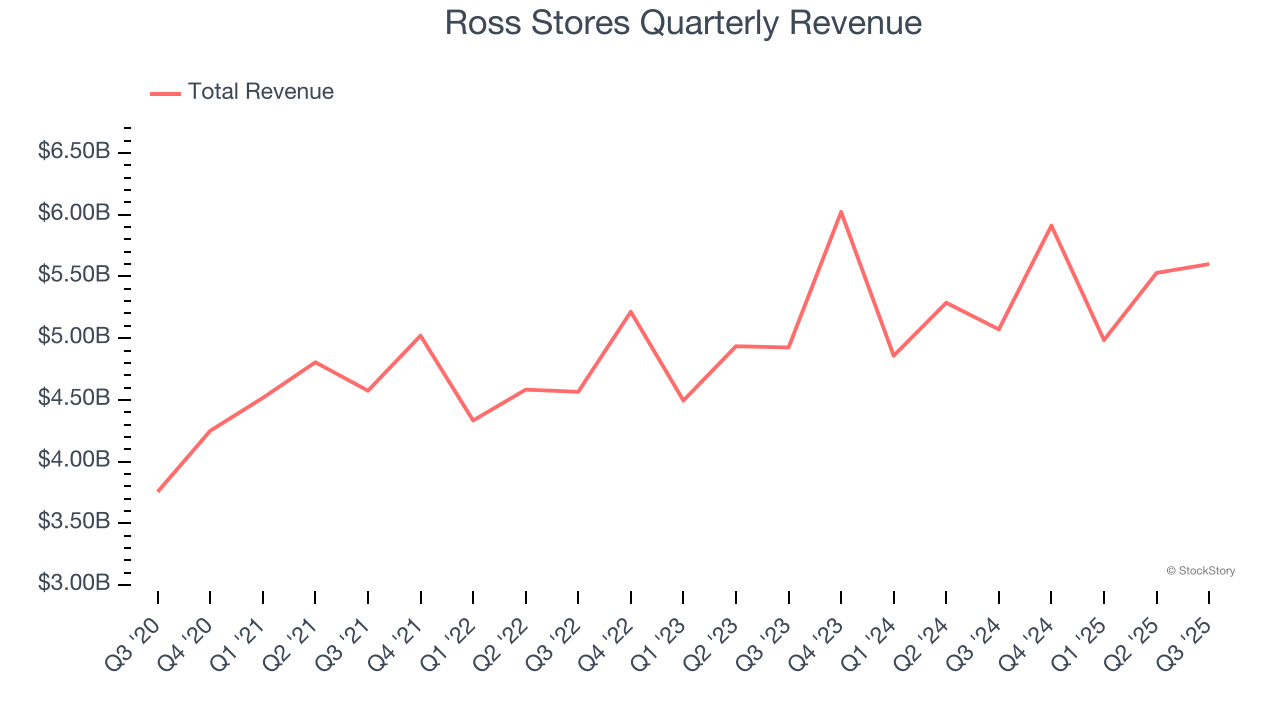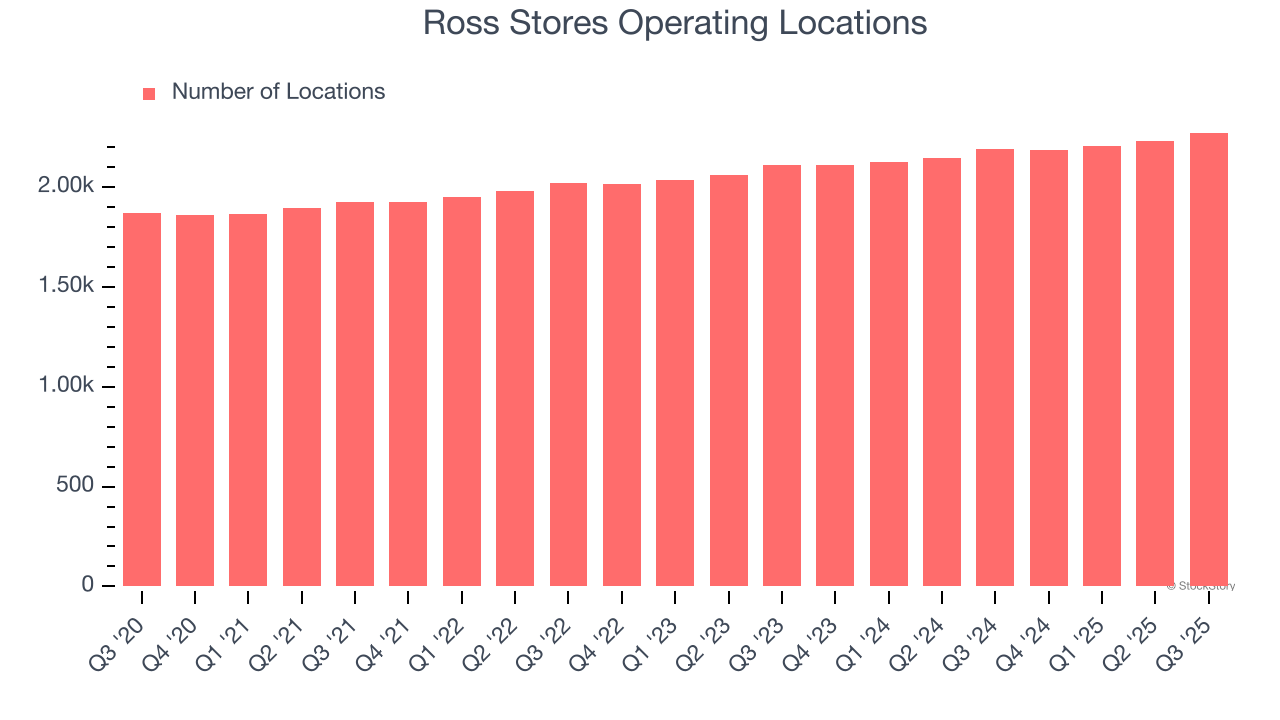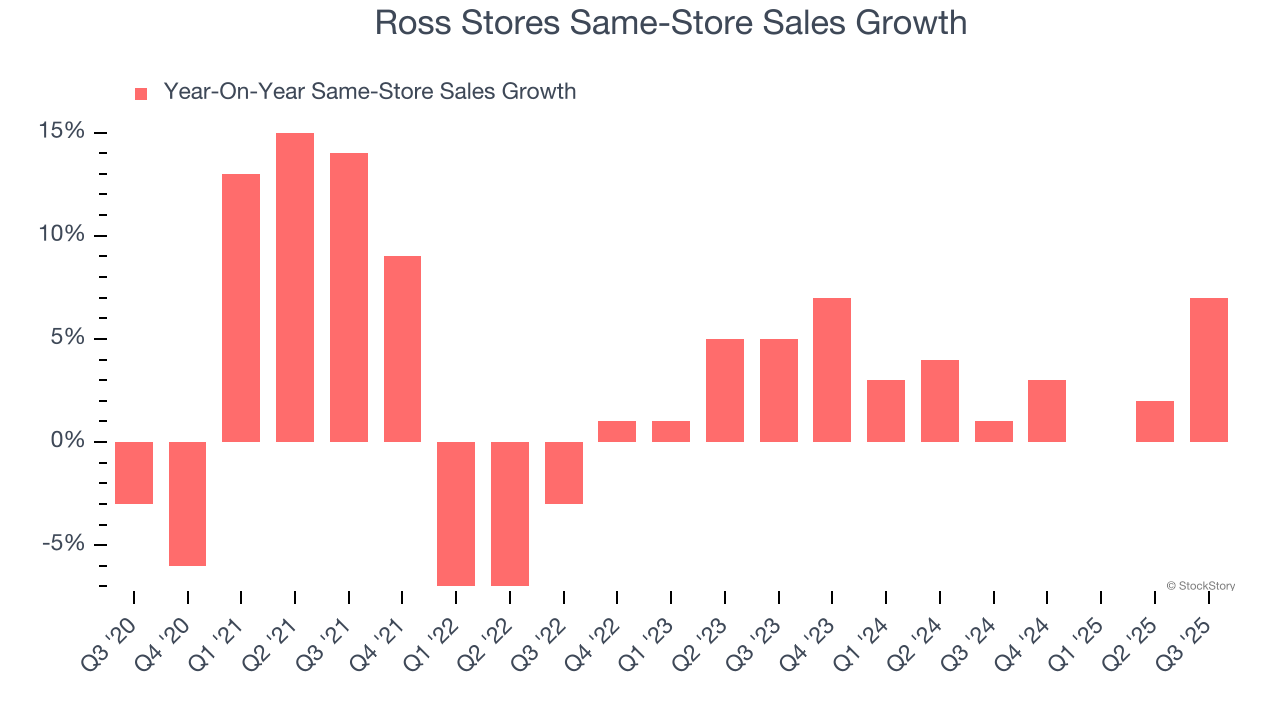
Off-price retail company Ross Stores (NASDAQ:ROST) reported revenue ahead of Wall Streets expectations in Q3 CY2025, with sales up 10.4% year on year to $5.6 billion. Its GAAP profit of $1.58 per share was 10.9% above analysts’ consensus estimates.
Is now the time to buy Ross Stores? Find out by accessing our full research report, it’s free for active Edge members.
Ross Stores (ROST) Q3 CY2025 Highlights:
- Revenue: $5.6 billion vs analyst estimates of $5.46 billion (10.4% year-on-year growth, 2.6% beat)
- EPS (GAAP): $1.58 vs analyst estimates of $1.42 (10.9% beat)
- Adjusted EBITDA: $825.6 million vs analyst estimates of $704.3 million (14.7% margin, 17.2% beat)
- EPS (GAAP) guidance for the full year is $6.42 at the midpoint, beating analyst estimates by 2.8%
- Operating Margin: 11.6%, in line with the same quarter last year
- Free Cash Flow Margin: 11%, up from 6.6% in the same quarter last year
- Locations: 2,273 at quarter end, up from 2,192 in the same quarter last year
- Same-Store Sales rose 7% year on year (1% in the same quarter last year)
- Market Capitalization: $52.18 billion
Company Overview
Selling excess inventory or overstocked items from other retailers, Ross Stores (NASDAQ:ROST) is an off-price concept that sells apparel and other goods at prices much lower than department stores.
Revenue Growth
A company’s long-term sales performance can indicate its overall quality. Even a bad business can shine for one or two quarters, but a top-tier one grows for years.
With $22.03 billion in revenue over the past 12 months, Ross Stores is one of the larger companies in the consumer retail industry and benefits from a well-known brand that influences purchasing decisions. However, its scale is a double-edged sword because it’s harder to find incremental growth when you’ve penetrated most of the market. To accelerate sales, Ross Stores likely needs to optimize its pricing or lean into international expansion.
As you can see below, Ross Stores’s 5.8% annualized revenue growth over the last six years (we compare to 2019 to normalize for COVID-19 impacts) was tepid, but to its credit, it opened new stores and increased sales at existing, established locations.

This quarter, Ross Stores reported year-on-year revenue growth of 10.4%, and its $5.6 billion of revenue exceeded Wall Street’s estimates by 2.6%.
Looking ahead, sell-side analysts expect revenue to grow 4.6% over the next 12 months, similar to its six-year rate. We still think its growth trajectory is attractive given its scale and implies the market is baking in success for its products.
While Wall Street chases Nvidia at all-time highs, an under-the-radar semiconductor supplier is dominating a critical AI component these giants can’t build without. Click here to access our free report one of our favorites growth stories.
Store Performance
Number of Stores
The number of stores a retailer operates is a critical driver of how quickly company-level sales can grow.
Ross Stores sported 2,273 locations in the latest quarter. Over the last two years, it has opened new stores at a rapid clip by averaging 4% annual growth, among the fastest in the consumer retail sector.
When a retailer opens new stores, it usually means it’s investing for growth because demand is greater than supply, especially in areas where consumers may not have a store within reasonable driving distance.

Same-Store Sales
A company's store base only paints one part of the picture. When demand is high, it makes sense to open more. But when demand is low, it’s prudent to close some locations and use the money in other ways. Same-store sales gives us insight into this topic because it measures organic growth for a retailer's e-commerce platform and brick-and-mortar shops that have existed for at least a year.
Ross Stores’s demand has been spectacular for a retailer over the last two years. On average, the company has increased its same-store sales by an impressive 3.4% per year. This performance suggests its rollout of new stores is beneficial for shareholders. We like this backdrop because it gives Ross Stores multiple ways to win: revenue growth can come from new stores, e-commerce, or increased foot traffic and higher sales per customer at existing locations.

In the latest quarter, Ross Stores’s same-store sales rose 7% year on year. This growth was an acceleration from its historical levels, which is always an encouraging sign.
Key Takeaways from Ross Stores’s Q3 Results
We were impressed by how significantly Ross Stores blew past analysts’ EBITDA expectations this quarter. We were also glad its revenue outperformed Wall Street’s estimates. Zooming out, we think this quarter featured some important positives. The stock traded up 1.8% to $163.37 immediately after reporting.
Ross Stores may have had a good quarter, but does that mean you should invest right now? What happened in the latest quarter matters, but not as much as longer-term business quality and valuation, when deciding whether to invest in this stock. We cover that in our actionable full research report which you can read here, it’s free for active Edge members.
